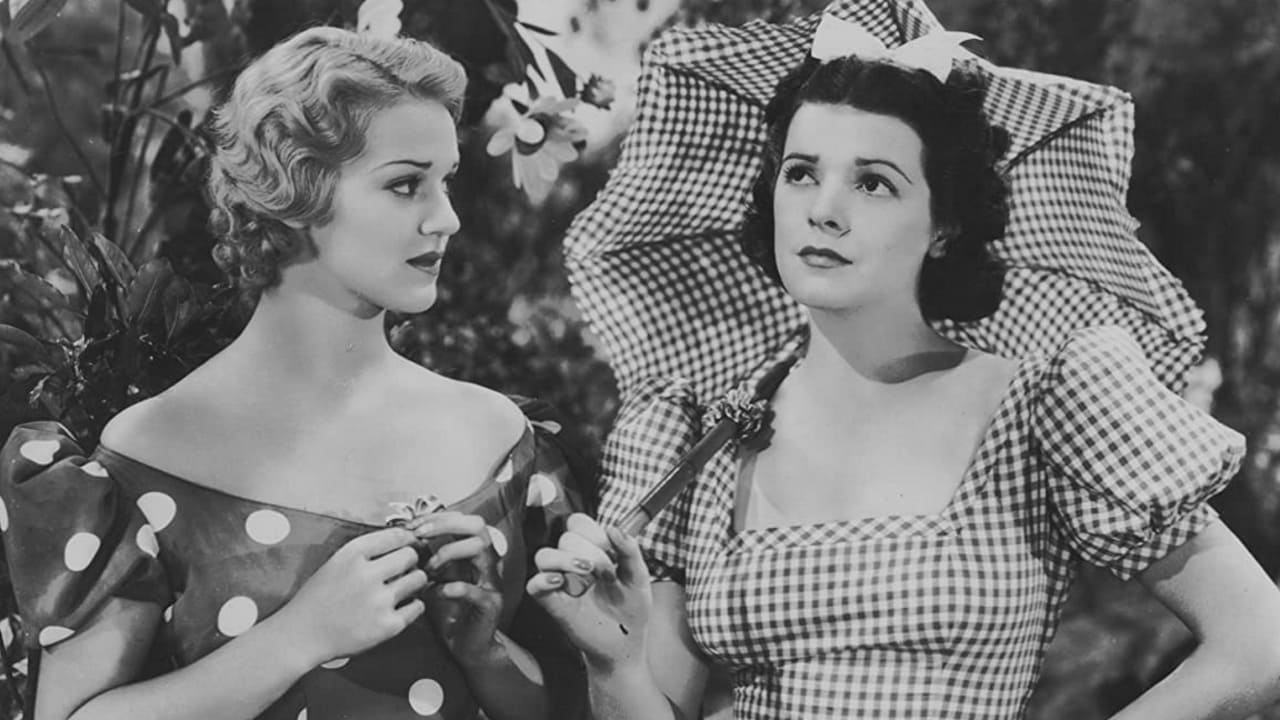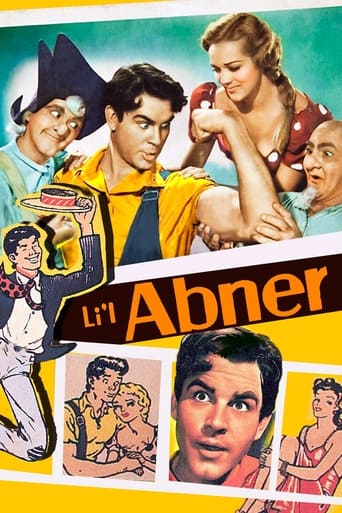

Best movie of this year hands down!
... View MoreWhat a waste of my time!!!
... View MoreSorry, this movie sucks
... View MoreClose shines in drama with strong language, adult themes.
... View MoreCopyright 1 November 1940 by Vogue Pictures, Ltd. No New York opening. U.S. release through RKO Radio Pictures: 1 November 1940. Never released in Australia, either theatrically or on television. 78 minutes.U.K. release title: TROUBLE CHASER.SYNOPSIS: Suffering a bout of indigestion after eating a Dagwood Bumstead sandwich, Li'l Abner is told by a mischievous barber that he has only 24 hours to live.NOTES: The plot of this one bears little relationship to the 1959 Paramount musical which was based on the very successful 1956 Broadway play.COMMENT: Here's a movie that fully deserved its poor reputation. In fact it's plain awful in just about every way. That's a pity because the producer had at least one worthwhile idea. By handing out parts to old-time comedians like Buster Keaton and Chester Conklin in theory he should have gladdened the hearts of picturegoers worldwide. Unfortunately, the witless script lets them down. In fact, aside from the decorative Martha O'Driscoll, the only featured player to give an attractive performance is Walter Catlett. I suspect he wrote his lines himself. Certainly he delivers them with a panache and style that serves to point up the amateurishness and signal lack of talent of most of the other players. I could go through the cast list awarding dishonorable mentions right and left, but it's most simpler to list those few such as Kay Sutton and Dick Elliott who are halfway competent. Indeed the introduction to Kay Sutton with the camera zeroing in on her eyes is just about the only touch of genuine flair the direction displays throughout. Fortunately the producer extended his love for the veteran slapstick comedians to the silent period generally, for he has given a job to Herman Raymaker, a successful director of the mid-twenties (e.g. the Rin-Tin-Tin feature, The Night Cry), who was forced into an early retirement a few years after the coming of sound (one of his last films, Trailing the Killer, made in 1932, starred Heinie Conklin who has a small part here). Raymaker directed the Walter Catlett scene as well as the climactic Sadie Hawkins Day race - and maybe even the Skunk Hollow chase as well. These scenes are certainly livelier than the rest of this tediously disappointing, elephantine movie. Hard to believe the waffley, non-satiric, schoolboyish story came from the pen of Al Capp himself. How could he disappoint his fans with such limpid tosh?
... View MoreIn rural Dogpatch, most eligible young women want to marry hunky Jeff York (as Li'l Abner). Curly blonde Martha O'Driscoll (as Daisy Mae) tries to arouse Mr. York with cleavage and a twisted ankle, but York doesn't want to get hitched. When a phony doctor gives him 24 hours to live, he reconsiders. Also turned on by dark-haired Kay Sutton (as Wendy Wilecat), York eventually finds himself engaged to both women. Based on Al Capp comic strip, this version of "Li'l Abner" is flat and uninspired. It does have an interesting cast of veterans, though, including Buster Keaton (as Lonesome Polecat) doing his stone-faced Indian schtick.*** Li'l Abner (11/1/40) Albert S. Rogell ~ Jeff York, Martha O'Driscoll, Buster Keaton, Maude Eburne
... View MoreOK, so this is as hokey as they come, but really sort of enjoyable. Jeff York as Li'l Abner is good, and Martha O'Driscoll as Daisy Mae is beautiful, so how can you go wrong? This film spends about the first 30 minutes establishing the locations and characters, and the final 43 minutes resolving the (thin) plot structure that revolves around both a Sadie Hawkins day race and Earthquake McGoon's capture and subsequent escape. The final 10 minutes are really fast paced with Wendy Wildcat and Daisy chasing after poor L'il Abner as he attempts to evade marriage. Hey, not a classic, but not bad either.
... View MoreThe list of musicals I'll watch is longer than the list of ballets. I can only think of two musicals I'll sit through (Seven Brides for Seven Brothers & Li'l Abner), and no ballets. Of the latter I make it a point to attempt to watch one ballet every year to prove to myself that I find them tedious. Except for the athleticism, the whole lot leaves me cold.Why is Li'l Abner in this select list? God only knows, but it always amuses me, and that can't be all bad. Over characterisations, corny songs, technicolour levels set at 11, and Stupyfing Jones, what more can one want.
... View More